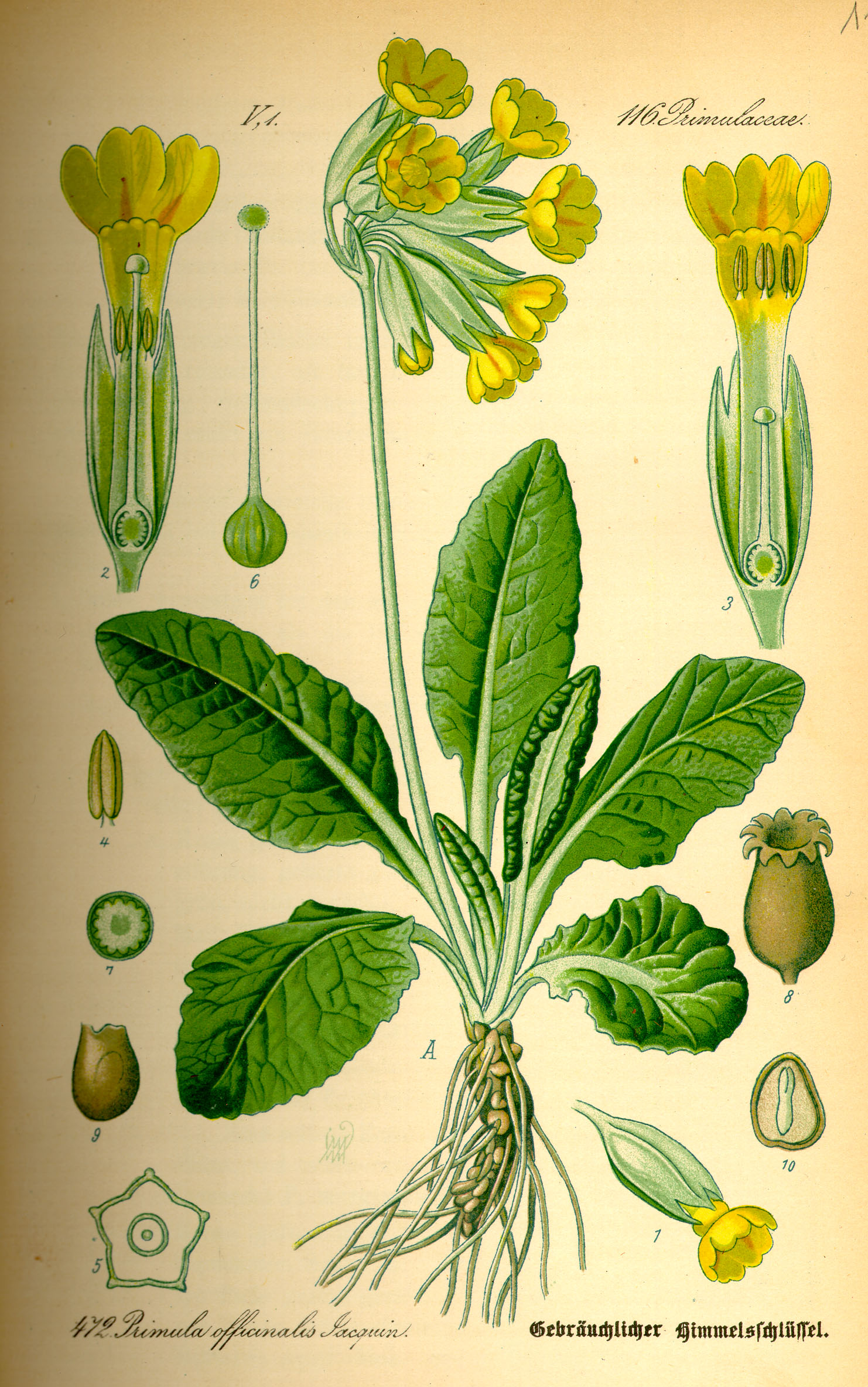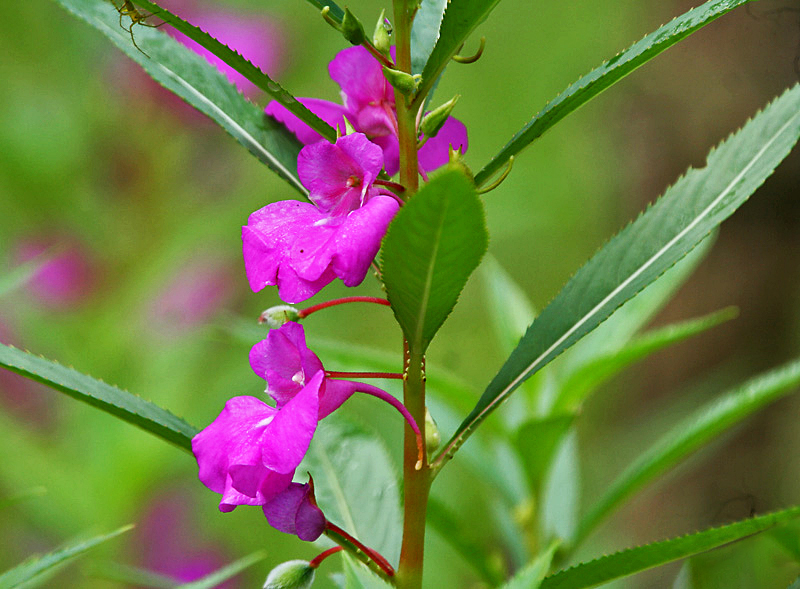|
Primulaceae
The Primulaceae ( ), commonly known as the primrose family (but not related to the Onagraceae, evening primrose family), are a family (biology), family of Herbaceous plant, herbaceous and woody flowering plants including some favourite garden plants and wildflowers. Most are Perennial plant, perennial though some species, such as Anagallis arvensis, scarlet pimpernel, are annual plant, annuals. Previously one of three families in the Order (biology), order Primulales, it underwent considerable genus, generic re-alignment once molecular phylogenetic methods were used for taxonomic classification. The order was then submerged in a much enlarged order Ericales and became a greatly enlarged Primulaceae ''sensu lato'' (''s.l''). In this new classification of the Angiosperm Phylogeny Group, each of the Primulales families was reduced to the rank of subfamily of Primulaceae ''s.l.'' The original Primulaceae (Primulaceae ''sensu stricto'' or ''s.s.'') then became subfamily Primuloideae, a ... [...More Info...] [...Related Items...] OR: [Wikipedia] [Google] [Baidu] |
Primula
''Primula'' () is a genus of herbaceous plant, herbaceous flowering plants in the family (biology), family Primulaceae. They include the primrose (''Primula vulgaris, P. vulgaris''), a familiar wildflower of banks and verges. Other common species are ''Primula auricula, P. auricula'' (auricula), ''Primula veris, P. veris'' (cowslip), and ''Primula elatior, P. elatior'' (oxlip). These species and many others are valued for their ornamental flowers. They have been extensively cultivated and Hybrid (biology)#Hybrid plants, hybridised (in the case of the primrose, for many hundreds of years). ''Primula'' are native plant, native to the temperate climate, temperate Northern Hemisphere, south into tropical mountains in Ethiopia, Indonesia, and New Guinea, and in temperate southern South America. Almost half of the known species are from the Himalayas. ''Primula'' has over 500 species in traditional treatments, and more if certain related genera are included within its circumscription ( ... [...More Info...] [...Related Items...] OR: [Wikipedia] [Google] [Baidu] |
Ericales
The Ericales are a large and diverse order of flowering plants in the asterid group of the eudicots. Well-known and economically important members of this order include tea and ornamental camellias, persimmon, ebony, blueberry, cranberry, lingonberry, huckleberry, kiwifruit, Brazil nut, argan, sapote, azaleas and rhododendrons, heather, heath, impatiens, phlox, Jacob's ladder, primroses, cyclamens, shea, sapodilla, pouterias, and trumpet pitchers. The order includes 22 families, according to the APG IV system of classification. The Ericales include trees, bushes, lianas, and herbaceous plants. Together with ordinary autophytic plants, they include chlorophyll-deficient mycoheterotrophic plants (e.g., '' Sarcodes sanguinea'') and carnivorous plants (e.g., genus '' Sarracenia''). Mycorrhizal associations are quite common among the order representatives, and three kinds of mycorrhiza are found exclusively among Ericales (namely, ericoid, arbutoid and monotro ... [...More Info...] [...Related Items...] OR: [Wikipedia] [Google] [Baidu] |
Maesa
''Maesa'' is a genus of flowering plants. It is placed in the family Primulaceae, subfamily Maesoideae, for which it is the sole genus (monotypic).''Maesa''. The Plant List. Previously it was placed in , or in a family of its own, Maesaceae.Kallersjo, M., Bergqvist, G., & Anderberg, A. A. (2000) [...More Info...] [...Related Items...] OR: [Wikipedia] [Google] [Baidu] |
Primula Vulgaris
''Primula vulgaris'', also called the common primrose, is a species of flowering plant in the family (biology), family Primulaceae, native plant, native to Eurasia.''Flora Europaea''''Primula vulgaris''/ref> The common name of this plant is primrose,Natural History Museum''Primula vulgaris'' or occasionally common primrose or English primrose to distinguish it from other ''Primula'' species referred to as primroses. Description ''Primula vulgaris'' is a perennial growing tall, with a basal rosette of leaves which are more-or-less evergreen in favoured habitats. The leaves are long and broad, often heavily wrinkled, with an irregularly crenate to dentate margin. The leaf blade is gradually attenuated towards the base and unevenly toothed. The single stem, extremely short, is hidden in the centre of the leaf rosette (botany), rosette.Manfred A. Fischer, Karl Oswald, Wolfgang Adler: Excursion flora for Austria, Liechtenstein and South Tyrol . 3rd, improved edition. Upper Austria, ... [...More Info...] [...Related Items...] OR: [Wikipedia] [Google] [Baidu] |
Primulales
Primulales was an order of flowering plants. This order was recognized in several systems with little variation in circumscription (see Bentham & Hooker, Engler and Wettstein system). In the classification system of Dahlgren the Primulales were in the superorder Primuliflorae (also called Primulanae). In the 1981 version of the Cronquist system it was an order placed in subclass Dilleniidae with the following circumscription: * order Primulales *: family Myrsinaceae *: family Primulaceae *: family Theophrastaceae The APG III system includes all the plants involved in the (expanded) order Ericales The Ericales are a large and diverse order of flowering plants in the asterid group of the eudicots. Well-known and economically important members of this order include tea and ornamental camellias, persimmon, ebony, blueberry, cranberry, l .... References {{Authority control Historically recognized angiosperm orders ... [...More Info...] [...Related Items...] OR: [Wikipedia] [Google] [Baidu] |
August Batsch
August Johann Georg Karl Batsch (28 October 1761 – 29 September 1802) was a German naturalist. He was a recognised authority on mushrooms, and also described new species of ferns, bryophytes, and seed plants. Life and career Batsch was born in Jena, Saxe-Weimar to George Lorenz Bratsch and Ernestine (''nee'' Franke) Bratsch. He studied at the Jena City School, and then had private tuition. He showed an aptitude for natural sciences and drawing, and so subsequently studied medicine and philosophy at the University of Jena (now known as the Friedrich Schiller University of Jena), entering in 1772 and obtaining his doctorate in philosophy in 1781 and in medicine in 1786, his supervisor being Justus Christian Loder. Batsch was married in 1787 to Amalie Pfaundel. They had three children, Friedrich (born 1789), George Friedrich Karl (1792), and Karoline (1795). He died in 1802 after a short illness. In 1786 Batsch began to teach natural history at the University of Jena and in ... [...More Info...] [...Related Items...] OR: [Wikipedia] [Google] [Baidu] |
Stamens
The stamen (: stamina or stamens) is a part consisting of the male reproductive organs of a flower. Collectively, the stamens form the androecium., p. 10 Morphology and terminology A stamen typically consists of a stalk called the filament and an anther which contains microsporangia. Most commonly, anthers are two-lobed (each lobe is termed a locule) and are attached to the filament either at the base or in the middle area of the anther. The sterile (i.e. nonreproductive) tissue between the lobes is called the connective, an extension of the filament containing conducting strands. It can be seen as an extension on the dorsal side of the anther. A pollen grain develops from a microspore in the microsporangium and contains the male gametophyte. The size of anthers differs greatly, from a tiny fraction of a millimeter in ''Wolfia'' spp up to five inches (13 centimeters) in '' Canna iridiflora'' and '' Strelitzia nicolai''. The stamens in a flower are collectively called the ... [...More Info...] [...Related Items...] OR: [Wikipedia] [Google] [Baidu] |
Corolla (flower)
Petals are modified leaves that form an inner whorl surrounding the reproductive parts of flowers. They are often brightly coloured or unusually shaped to attract pollinators. All of the petals of a flower are collectively known as the ''corolla''. Petals are usually surrounded by an outer whorl of modified leaves called sepals, that collectively form the ''calyx'' and lie just beneath the corolla. The calyx and the corolla together make up the perianth, the non-reproductive portion of a flower. When the petals and sepals of a flower are difficult to distinguish, they are collectively called tepals. Examples of plants in which the term ''tepal'' is appropriate include genera such as '' Aloe'' and '' Tulipa''. Conversely, genera such as '' Rosa'' and '' Phaseolus'' have well-distinguished sepals and petals. When the undifferentiated tepals resemble petals, they are referred to as "petaloid", as in petaloid monocots, orders of monocots with brightly coloured tepals. Since they in ... [...More Info...] [...Related Items...] OR: [Wikipedia] [Google] [Baidu] |
Flower
Flowers, also known as blooms and blossoms, are the reproductive structures of flowering plants ( angiosperms). Typically, they are structured in four circular levels, called whorls, around the end of a stalk. These whorls include: calyx, modified leaves; corolla, the petals; androecium, the male reproductive unit consisting of stamens and pollen; and gynoecium, the female part, containing style and stigma, which receives the pollen at the tip of the style, and ovary, which contains the ovules. When flowers are arranged in groups, they are known collectively as inflorescences. Floral growth originates at stem tips and is controlled by MADS-box genes. In most plant species flowers are heterosporous, and so can produce sex cells of both sexes. Pollination mediates the transport of pollen to the ovules in the ovaries, to facilitate sexual reproduction. It can occur between different plants, as in cross-pollination, or between flowers on the same plant or even the same f ... [...More Info...] [...Related Items...] OR: [Wikipedia] [Google] [Baidu] |
Haplostemonous
This glossary of botanical terms is a list of definitions of terms and concepts relevant to botany and plants in general. Terms of plant morphology are included here as well as at the more specific Glossary of plant morphology and Glossary of leaf morphology. For other related terms, see Glossary of phytopathology, Glossary of lichen terms, and List of Latin and Greek words commonly used in systematic names. A B ... [...More Info...] [...Related Items...] OR: [Wikipedia] [Google] [Baidu] |
Illustration Primula Veris0
An illustration is a decoration, interpretation, or visual explanation of a text, concept, or process, designed for integration in print and digitally published media, such as posters, flyers, magazines, books, teaching materials, animations, video games and films. An illustration is typically created by an illustrator. Digital illustrations are often used to make websites and apps more user-friendly, such as the use of emojis to accompany digital type. Illustration also means providing an example; either in writing or in picture form. The origin of the word "illustration" is late Middle English (in the sense ‘illumination; spiritual or intellectual enlightenment’): via Old French from Latin">-4; we might wonder whether there's a point at which it's appropriate to talk of the beginnings of French, that is, when it wa ... from Latin ''illustratio''(n-), from the verb ''illustrare''. Illustration styles Contemporary illustration uses a wide range of styles and technique ... [...More Info...] [...Related Items...] OR: [Wikipedia] [Google] [Baidu] |






